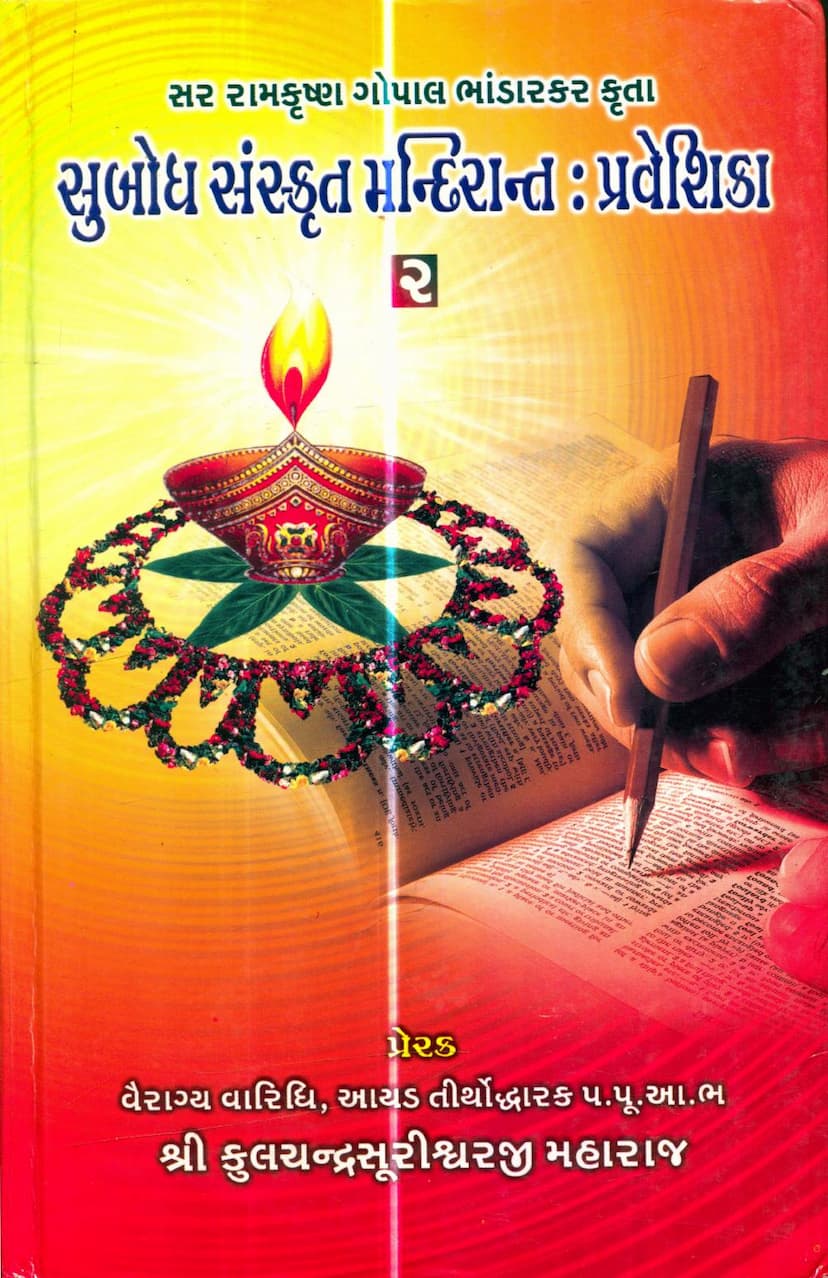Subodh Sanskrit Mandirant Praveshika Part 02
Added to library: September 2, 2025

Summary
The provided text is a detailed index and grammatical explanation of Sanskrit verbs and related concepts, presented as part of a Jain educational series. Based on the content, here's a comprehensive summary in English:
Book Title: Subodh Sanskrit Mandirant Praveshika Part 02 Author: Ramkrishna Gopal Bhandarkar Publisher: Divya Darshan Trust
Overall Purpose: This book is the second part of a Sanskrit learning series designed for a Jain audience. It focuses on the intricacies of Sanskrit verbs, their conjugation across different tenses, moods, and voices, with a specific emphasis on understanding the verb system as it is applied in Jain scriptures and philosophical texts. The content is highly technical, aiming to provide a thorough grammatical foundation.
Key Content Areas (as evidenced by the index):
-
Verb Conjugation (Gana Divisions): The book systematically covers the ten divisions (Ganas) of Sanskrit verbs. Each Gana is analyzed for its irregular verb formations in various tenses and moods:
- Present Tense (Vartaman Kal)
- Imperfect Past Tense (Hastan Bhutkal)
- Imperative Mood (Ajnaarth)
- Potential Mood (Vidhyarth)
- Past Perfect Tense (Paroksha Bhutkal)
- Perfect Tense (Adyatan Bhutkal)
- Future Tense (Shvashthan Bhavishyakal, Samanya Bhavishyakal)
-
Grammatical Rules and Exceptions: A significant portion of the text is dedicated to detailing specific rules and exceptions related to verb formation, including:
- Vowel changes (guna, vriddhi)
- Root modifications and augmentations
- Application of prefixes (upasargas)
- Formation of passive voice (karmaṇi) and causative voice (prerak)
- Rules for specific verb roots with irregular patterns.
-
Verb Roots: The index lists numerous Sanskrit verb roots with their meanings and their application in different tenses and moods. This forms the practical part of the learning material.
-
Vocabulary (Kosha): The book includes Sanskrit-Gujarati and Gujarati-Sanskrit glossaries, providing translations and meanings of Sanskrit words, particularly those related to verbs and their usage.
-
Jain Context: While the core is Sanskrit grammar, the context implies its application within Jainism. The dedication to Jain Acharyas and the mention of "Jain Shravakachar" and "Jain Itihas" in the author's other works (as listed) suggest that the Sanskrit learned here is intended for studying Jain literature. The title itself, "Subodh Sanskrit Mandirantah Praveshika," indicates an introduction to Sanskrit suitable for entering religious study spaces ("Mandirantah").
-
Pedagogical Approach: The book is structured as a textbook ("Path" chapters) with explanations of rules ("Niyam") and examples ("Rupakhyan"). It also includes exercises ("Swadhyay Prashna") for practice. The detailed index at the beginning (Anukramanika) helps learners navigate the content.
-
Editions and Availability: The publisher's details mention multiple editions and print runs, indicating its popularity and use within the Jain community. The pricing and distribution information (e.g., for Sadhu, Sadhvi, and Shravak Bhandars) further highlights its purpose as an educational resource within a specific religious context.
In essence, "Subodh Sanskrit Mandirantah Praveshika Part 02" is a comprehensive Sanskrit grammar textbook, specifically focusing on verb morphology and conjugation, tailored for the educational needs of Jain learners who aim to understand Sanskrit texts, likely including scriptures and philosophical works.